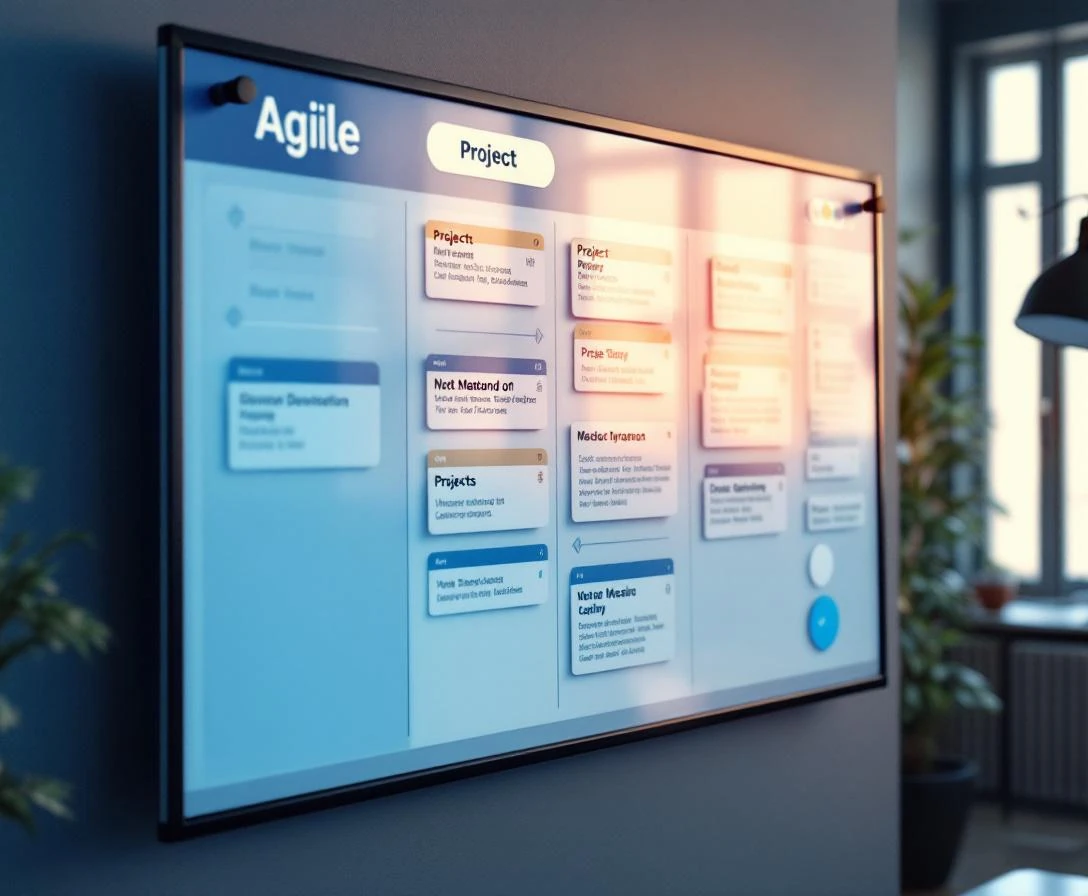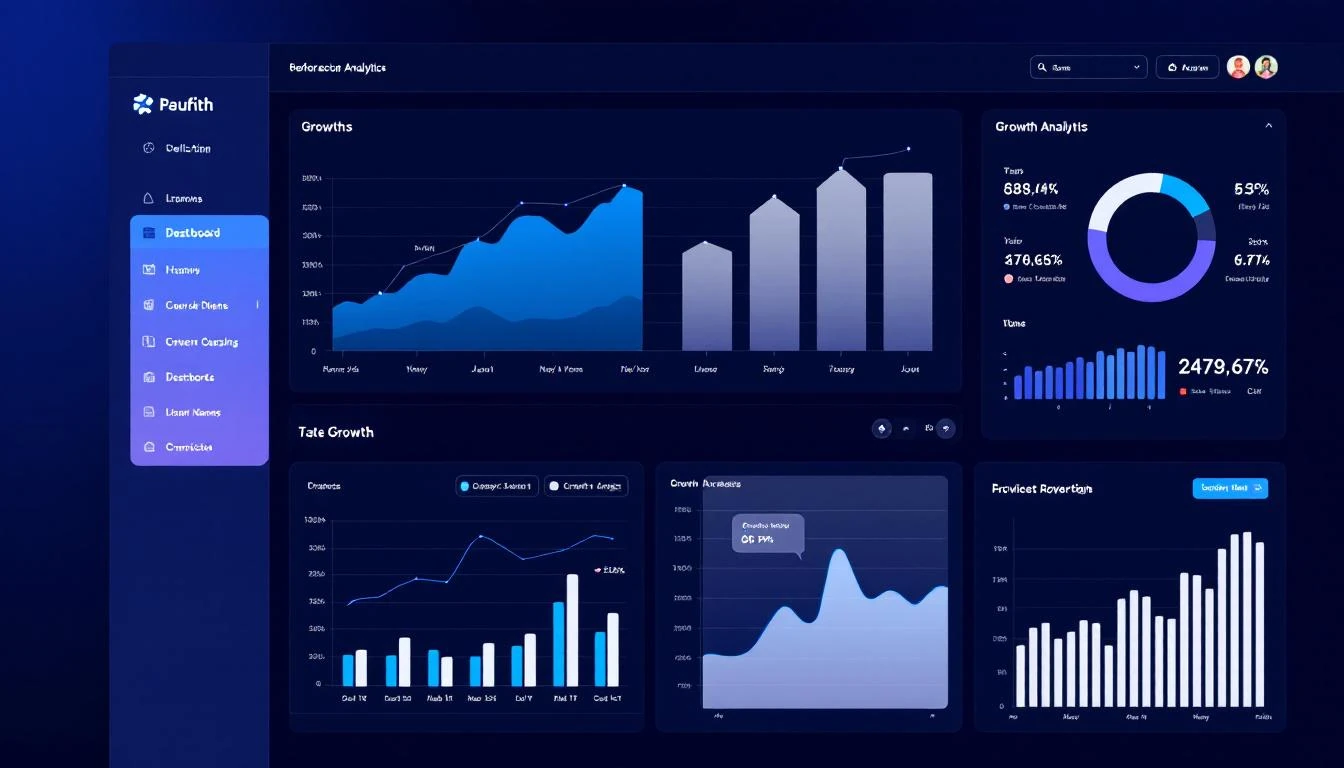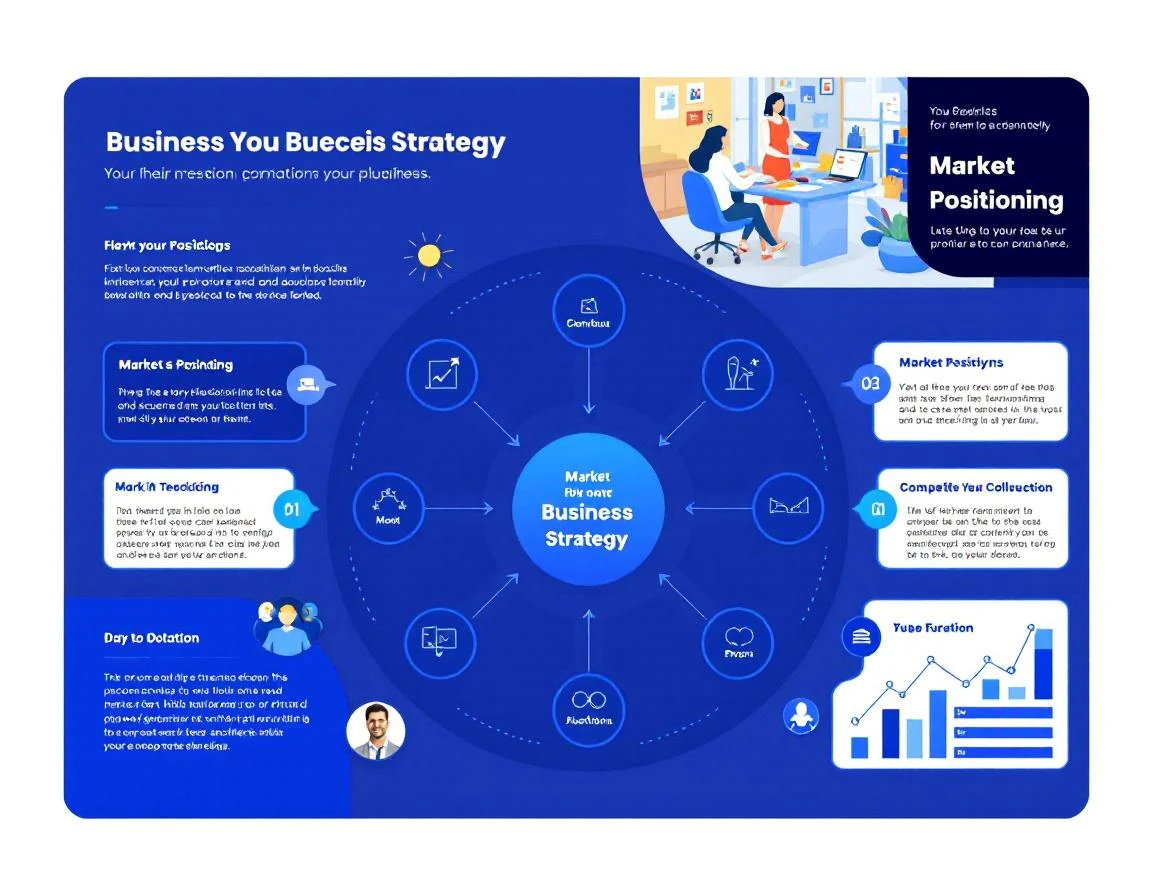
Startup AI Idea Development Guide
App Web Dev Ltd
5 July 2025
Complete guide to AI chatbots for UK businesses in 2025. Learn implementation strategies, ROI analysis, platform comparisons, and real case studies. Transform your customer engagement today.
From AI Idea to Reality: A Non-Technical Entrepreneur's Guide to Startup Development

Picture this: You're lying awake at 3 AM, your mind racing with an incredible AI idea that could revolutionise how people work, learn, or live. You can see it clearly – the problem it solves, the lives it could change, the business it could become. But then reality hits. You're not a programmer. You don't speak "machine learning" or "API." The technical world feels like a foreign country where you don't know the language.
If this sounds familiar, you're not alone. Some of the most successful AI startups were founded by people who couldn't code a single line but understood their market better than anyone else. The secret? They learned to bridge the gap between vision and execution, between business need and technical solution.
This guide will take you on that same journey. You'll discover how to validate your AI idea, understand the development process, and prepare for productive conversations with development agencies like App Web Dev Ltd. We'll translate complex startup terminology into plain English, show you proven pathways from concept to market, and help you avoid the costly mistakes that derail 90% of startups.
Whether you're planning to build the next AI-powered productivity tool or revolutionise an entire industry, this guide will give you the confidence and knowledge to turn your 3 AM inspiration into a thriving business. Let's transform your brilliant idea into reality, one strategic step at a time.
Why Non-Technical Founders Often Win the AI Game
Here's a truth that might surprise you: 78% of investors prioritise team strength over technology when evaluating AI startups. That means your ability to understand customers, navigate markets, and build relationships matters more than your ability to code algorithms.
Consider some of the UK's biggest AI success stories. Brian Chesky couldn't code when he started Airbnb (now worth billions with AI-powered recommendations). Drew Houston wasn't a machine learning expert when he founded Dropbox (which uses AI for file management). These founders succeeded because they understood their customers' pain points intimately and built solutions that people actually wanted.
The AI startup landscape has fundamentally changed. You don't need to be a technical genius to build an AI company – you need to be a problem-solving genius. While technical co-founders obsess over model accuracy and architecture, non-technical founders focus on the questions that actually matter: Who will pay for this? What problem does it solve? How will people discover it?
This shift is accelerating thanks to modern development approaches. At App Web Dev Ltd, we use agentic coding methodologies that can reduce development timelines by 60% compared to traditional approaches. This means your idea can reach market faster, with lower costs and higher quality. The technical barriers that once seemed insurmountable are becoming manageable stepping stones.
Throughout this guide, we'll walk through the essential knowledge every AI entrepreneur needs, from validating your initial concept to preparing for your first development meeting. You'll learn the startup terminology that matters, understand the development process, and discover how to make informed decisions about funding, competition, and technical planning.
Most importantly, you'll gain the confidence to have productive conversations with development agencies and investors. By the end, you'll speak startup fluently and know exactly what questions to ask to turn your brilliant idea into a thriving business.
Starting with Your AI Idea: From Inspiration to Validation

Every successful AI startup begins with a moment of clarity – that flash of insight when you realise technology could solve a real problem in a better way. But here's what separates successful entrepreneurs from dreamers: they don't fall in love with their first idea. They fall in love with the problem they're solving.
Sarah, a non-technical founder from Manchester, had an idea for AI-powered recruitment software. Her first instinct was to build something that could "do everything" – screen CVs, schedule interviews, assess candidates, and predict job performance. It sounded impressive, but when she started talking to actual HR managers, she discovered something crucial: they didn't want a comprehensive solution. They wanted one specific pain point solved really well.
This is the essence of idea validation. Before you write a single line of code or spend a penny on development, you need to answer three fundamental questions: Is this problem real? Do people care enough to pay for a solution? Can AI actually solve it better than existing alternatives?
The validation process starts with customer interviews. Not surveys or online research – actual conversations with potential users. You need to speak with at least 50 people in your target market. Ask them about their current challenges, how they solve them now, and what they'd pay for a better solution. You'll be surprised how often people say they need something but won't pay for it, or how they describe the problem differently than you imagined.
Take the time to understand the customer journey. When does this problem occur? How much does it cost them currently? What have they tried before? Sarah discovered that HR managers spent 3 hours per week manually screening CVs, but they'd tried automated solutions that missed qualified candidates. The real problem wasn't screening everything – it was screening accurately.
Once you've validated the problem, test your solution concept. Create a simple landing page describing your AI solution and see if people will join a waitlist. Run targeted ads to measure interest. Partner with potential customers to understand their workflow. The goal isn't to build the product yet – it's to prove people want it built.
Remember, 42% of AI startups fail because they solve problems that don't exist or that people won't pay to solve. Validation isn't about proving your idea is perfect – it's about discovering what people actually need and what they'll pay for. Your brilliant 3 AM idea might evolve into something completely different, and that's not failure – that's smart entrepreneurship.
MVP Development: Building Your Proof of Concept

The term "MVP" – Minimum Viable Product – gets thrown around constantly in startup circles, but what does it actually mean for AI companies? Simply put, it's the smallest version of your product that solves the core problem and proves people will use it. Think of it as your hypothesis made tangible.
Here's where many first-time entrepreneurs go wrong: they think "minimum" means "basic" or "low quality." It doesn't. Your MVP should solve one specific problem exceptionally well, rather than solving many problems adequately. Remember Sarah's recruitment software? Her MVP didn't try to handle the entire hiring process – it focused solely on accurately screening CVs using AI, something that could be tested and validated with real HR teams.
The MVP development process follows a clear pathway. First, you'll work with your development team to define the core functionality. What is the one thing your AI needs to do that will make customers say "yes, this solves my problem"? Everything else is a distraction. Document this clearly – it becomes your project brief and helps keep everyone focused.
Next comes the technical architecture. This is where partnering with an experienced AI development agency like App Web Dev Ltd becomes invaluable. They'll help you choose the right AI frameworks, ensure your solution can scale, and avoid common pitfalls that can cost months of development time. With agentic coding approaches, what once took 12 months can often be accomplished in 6-8 months.
The development process itself should be iterative. Rather than building everything and then testing, you'll build in small increments, testing each component as you go. This approach, called Agile development, means you can adjust course if you discover something isn't working, rather than rebuilding everything from scratch.
Throughout development, maintain close contact with your potential customers. Show them early versions, gather feedback, and be prepared to pivot if necessary. The goal isn't to build what you originally envisioned – it's to build what customers actually want. Some of the most successful AI startups today look nothing like their founders' original ideas.
Budget wisely for your MVP. Basic AI development typically costs £15,000-£50,000, depending on complexity. This might seem like a lot, but remember – you're not building the final product. You're building a proof of concept that will either validate your business model or save you from investing in something that won't work.
The biggest mistake? Perfectionism. Your MVP doesn't need to be beautiful or feature-complete. It needs to work reliably for its core function and demonstrate clear value to users. You can always improve the interface, add features, and scale the technology later. The key is getting something into users' hands quickly so you can start learning what actually matters.
When your MVP is ready, the real work begins: getting feedback, measuring usage, and deciding whether to pivot or persevere. But that's a challenge for tomorrow. Today, focus on building something that solves a real problem for real people.
Market Fit Validation: Testing Your Way to Success

Product-market fit is the holy grail of startup success, but it's also the most misunderstood concept in entrepreneurship. Simply put, it's when your product satisfies strong market demand – when customers actively seek out your solution, use it regularly, and tell others about it. For AI startups, achieving product-market fit can be particularly challenging because the technology is often impressive, but the market need isn't always clear.
Marc Andreessen, the legendary venture capitalist, described product-market fit as "being in a good market with a product that can satisfy that market." You'll know you've achieved it when you can barely keep up with demand, when customers become evangelists, and when competitors start copying your approach. Until then, you're in what's called the "valley of death" – the challenging period between product launch and sustainable growth.
The validation process begins the moment your MVP is ready. Start with a small group of pilot customers – ideally 10-20 people who represent your target market. Don't try to acquire thousands of users immediately. Instead, focus on getting deep insights from a smaller group who will give you honest feedback and help you iterate quickly.
Measure engagement, not just adoption. It's easy to get people to try your AI solution once, but much harder to get them to use it consistently. Track how often people use your product, which features they use most, and where they drop off. Are they coming back daily? Weekly? Or trying it once and never returning? These patterns tell you everything about product-market fit.
Listen to how customers describe your product. When they explain it to others, do they use the same language you use? Do they understand its core value proposition? Often, customers will describe your product in ways that surprise you – and their description might be more accurate than your own marketing copy. Pay attention to these insights; they're gold for refining your positioning.
The metrics that matter most are retention and referrals. For AI products, good retention rates vary by industry, but generally, you want to see at least 40% of users still active after 90 days. Referral rates are even more telling – if less than 30% of your customers would recommend your product to others, you probably haven't achieved product-market fit yet.
Be prepared to pivot based on what you learn. Darktrace, one of the UK's most successful AI companies, started as a general AI security solution but pivoted to focus specifically on cybersecurity threat detection. They found that while their AI was impressive, customers had one specific, urgent need that existing solutions couldn't address effectively.
The validation process isn't just about proving your product works – it's about understanding how it fits into your customers' lives and workflows. Does it save them time? Reduce costs? Increase accuracy? Help them make better decisions? The clearer you can articulate this value, the easier it becomes to acquire new customers and retain existing ones.
Remember, 85% of successful AI startups validate their market before building the full product. This isn't about being cautious – it's about being smart. Market validation helps you avoid the expensive mistake of building something impressive that nobody wants to buy.
Competitor Research: Understanding Your Competitive Landscape
Competitor analysis isn't about copying what others are doing – it's about understanding the market landscape and finding your unique position within it. For AI startups, this research is particularly crucial because the technology moves so quickly that what seems like a unique solution today might have ten competitors tomorrow.
Start by identifying three types of competitors: direct competitors (solving the same problem with AI), indirect competitors (solving the same problem with different technology), and substitute solutions (how people currently solve this problem). For example, if you're building AI-powered financial planning software, your direct competitors might be other AI finance tools, indirect competitors could be traditional financial planning software, and substitute solutions might be spreadsheets or human financial advisors.
The goal isn't to find a market with no competitors – that's often a red flag that suggests no market exists. Instead, look for markets where existing solutions are inadequate, expensive, or difficult to use. Some of the most successful AI startups entered crowded markets but found specific pain points that others hadn't addressed effectively.
Analyze how competitors position themselves. What problems do they claim to solve? What's their pricing model? Who are their target customers? More importantly, read their customer reviews and social media mentions. What are people complaining about? What features do they wish existed? These gaps represent opportunities for your AI solution.
Pay attention to competitor funding and growth patterns. Companies that have raised significant funding but show little growth might indicate market challenges. Conversely, bootstrapped companies with steady growth might suggest a sustainable market opportunity. Use tools like Crunchbase, LinkedIn, and company websites to understand competitor trajectories.
Don't ignore the human competition. Many AI startups focus on competing with other AI companies while forgetting that their real competition might be manual processes or human service providers. Understanding how people currently solve the problem – and why they might resist changing – is crucial for developing your go-to-market strategy.
Study competitor marketing and sales approaches. How do they acquire customers? What channels do they use? What messaging resonates with their audience? You don't need to copy their approach, but understanding what works (and what doesn't) can inform your own strategy.
The key insight from competitor research isn't "we need to be different" – it's "we need to be better where it matters." Tractable, the UK AI company that reached a £1.5 billion valuation, didn't create a new category. They entered the existing visual assessment market but used AI to provide faster, more accurate results than traditional methods.
Remember, your competitive advantage might not be your technology – it might be your understanding of the customer, your pricing model, your partnerships, or your go-to-market strategy. The best AI startups combine innovative technology with superior business execution.
Finally, track competitors ongoing but don't obsess over them. The biggest mistake is trying to build everything your competitors have plus one extra feature. Instead, focus on doing one thing exceptionally well and let your unique value proposition drive your product decisions.
Funding Considerations: Financing Your AI Startup Journey
Funding is often the most intimidating aspect of startup life, but it doesn't have to be. Understanding your financing options and what investors look for can transform this challenge into a strategic advantage. The key is matching your funding approach to your business stage, growth trajectory, and long-term vision.
Let's start with the basics: not every AI startup needs venture capital. Many successful companies bootstrap their way to profitability, using revenue from early customers to fund growth. This approach takes longer but means you retain full control and ownership. If your AI solution can generate revenue quickly and doesn't require massive upfront investment, bootstrapping might be the smartest path.
For startups that need external funding, the UK offers several options. Pre-seed funding typically ranges from £100,000 to £500,000 and comes from angel investors, startup accelerators, or government grants. At this stage, investors are betting on you and your team more than your technology. They want to see market validation, a clear vision, and evidence that you can execute.
Seed funding rounds average £1.2 million in the UK AI sector and require more substantial traction. Investors want to see product-market fit, growing user base, and a clear path to profitability. This is where your earlier validation work pays off – investors don't want to hear about your amazing technology; they want to hear about your satisfied customers and growing revenue.
Here's what investors actually look for in AI startups: First, they want to see a large addressable market. Your solution doesn't need to be useful to everyone, but it needs to be essential to a significant group of people. Second, they want to understand your competitive advantage. What makes your AI solution better than existing alternatives, and how will you maintain that advantage as the market evolves?
The team is often the most important factor. Investors know that markets change, technologies evolve, and products pivot, but great teams find ways to succeed regardless. They're looking for complementary skills, relevant experience, and the ability to learn quickly. As a non-technical founder, emphasize your market knowledge, customer relationships, and business execution skills.
Financial projections matter, but don't obsess over precise numbers. Investors know that early-stage forecasts are largely guesswork. Instead, focus on demonstrating logical thinking about your business model. How will you acquire customers? What will it cost? How will you price your product? What are your key assumptions, and how will you test them?
Understand startup metrics that investors care about. Customer Lifetime Value (LTV) is the total revenue you expect from a customer over their relationship with your company. Customer Acquisition Cost (CAC) is how much you spend to acquire each customer. Investors want to see an LTV:CAC ratio of at least 3:1, preferably 5:1 or higher. Monthly Recurring Revenue (MRR) shows predictable income, while churn rate indicates customer satisfaction and retention.
Consider alternative funding sources before approaching VCs. Government grants through Innovate UK can provide non-dilutive funding for AI research and development. Revenue-based financing allows you to raise capital without giving up equity, repaying investors from future revenue. Strategic partnerships with larger companies can provide both funding and market access.
The fundraising process itself is time-consuming and emotionally challenging. Most founders underestimate how long it takes and how much it distracts from running the business. Plan for the fundraising process to take 6-12 months and prepare thoroughly before you start. Have your financials organized, your pitch deck polished, and your story clearly articulated.
Remember, funding is not a goal – it's a means to an end. The best time to raise money is when you don't desperately need it, when you have multiple options, and when you can clearly articulate how the funding will accelerate your growth. Focus on building a great business, and the funding will follow.
Technical Planning: Making Smart Technology Decisions

Technical planning doesn't require you to become a programmer, but it does require you to understand the key decisions that will shape your AI startup's future. Think of this as learning to speak enough "technical" to have productive conversations with developers, make informed choices about architecture, and avoid costly mistakes that could derail your progress.
The first major decision is build versus buy. Should you develop your AI from scratch or use existing frameworks and APIs? Most successful AI startups use a hybrid approach – they build custom solutions for their unique value proposition while leveraging existing tools for standard functionality. For example, you might use Google's Natural Language API for text processing while building custom algorithms for your specific industry application.
Understanding AI frameworks can help you make better decisions. TensorFlow and PyTorch are popular for machine learning, while OpenAI's GPT models can handle natural language tasks. Cloud platforms like AWS, Google Cloud, and Microsoft Azure provide AI services that can accelerate development. Your development team will make the technical choices, but understanding the options helps you ask the right questions.
Data strategy is crucial for AI success. Your AI solution will be only as good as the data it learns from. Consider where your data will come from, how you'll collect it, and what privacy regulations apply. In the UK, GDPR compliance is mandatory, and AI systems must be transparent about how they use personal data. Plan for data collection, storage, and processing from the beginning – retrofitting data compliance is expensive and time-consuming.
Scalability planning prevents future headaches. Your MVP might work perfectly for 100 users, but what happens when you have 10,000? Cloud-based solutions can scale automatically, but they also increase costs as you grow. Discuss scalability with your development team early, not when you're struggling to handle growth.
Security considerations are particularly important for AI systems. AI models can be vulnerable to attacks, and customer data must be protected. Ensure your development team follows security best practices, implements proper authentication and authorization, and regularly updates security measures. This isn't just about compliance – data breaches can destroy startup credibility overnight.
The role of agentic coding in modern AI development deserves special attention. At App Web Dev Ltd, we use agentic coding methodologies that treat AI systems as autonomous agents working together. This approach can reduce development time by 60% while creating more robust, scalable solutions. Instead of building monolithic applications, agentic coding creates modular systems that can adapt and evolve as your business grows.
Quality assurance and testing are often overlooked in AI development. Unlike traditional software, AI systems can produce unpredictable results, making testing more complex. Plan for extensive testing with real data, edge cases, and user scenarios. Consider how you'll monitor AI performance in production and what you'll do if the system makes incorrect predictions.
Integration planning ensures your AI solution works with existing systems. Will your customers need to change their workflows? Can your solution integrate with popular business tools? The easier your AI is to adopt, the faster you'll acquire customers. Design integration points early, not as an afterthought.
Performance monitoring helps you understand how your AI solution performs in real-world conditions. Unlike traditional software metrics, AI systems require specialized monitoring for model accuracy, prediction confidence, and data drift. Plan for ongoing monitoring and model updates – AI systems need regular maintenance to remain effective.
The key to successful technical planning is balancing current needs with future possibilities. Your technical architecture should solve today's problems while providing flexibility for tomorrow's opportunities. Work with experienced AI development teams who understand these trade-offs and can guide you through the decision-making process.
Remember, technical planning isn't about choosing the most advanced technology – it's about choosing the right technology for your specific needs. The best AI startups use proven, reliable technologies that solve real problems effectively. Complexity for its own sake is a recipe for failure.
Finally, budget for ongoing technical maintenance and updates. AI systems require continuous improvement, data updates, and security patches. Plan for these costs from the beginning, not as a surprise expense when your startup is trying to achieve profitability.
Your Journey from Idea to AI Reality Starts Now
We've covered a lot of ground together – from that initial spark of inspiration to the technical planning that will bring your AI vision to life. If you've made it this far, you're already ahead of most aspiring entrepreneurs who never move beyond the idea stage. The knowledge you've gained puts you in the top 10% of founders who actually understand what it takes to build a successful AI startup.
Let's recap the essential steps that will transform your idea into a thriving business. First, validate your concept through real customer conversations – remember, 42% of startups fail because they solve problems nobody wants solved. Second, focus on building an MVP that does one thing exceptionally well, rather than trying to solve every problem at once. Third, measure product-market fit through engagement and retention, not just initial adoption. Fourth, understand your competition without being paralyzed by it – focus on being better where it matters most.
The funding landscape offers more opportunities than ever for AI startups, but success depends on demonstrating traction and market validation before you need the money. Finally, technical planning doesn't require you to become a programmer, but it does require you to understand the key decisions that will shape your startup's future.
Here's what makes this moment special: the barriers to AI startup success have never been lower. Modern development approaches like agentic coding can reduce development time by 60%. Cloud platforms provide AI capabilities that once required teams of PhD researchers. Most importantly, investors and customers are actively seeking AI solutions to real problems.
But knowledge without action is just entertainment. The difference between successful entrepreneurs and everyone else isn't intelligence, luck, or technical skills – it's the willingness to take the next step. Your brilliant idea deserves more than late-night brainstorming sessions. It deserves to become reality.
This is where partnering with the right development team becomes crucial. At App Web Dev Ltd, we've helped dozens of non-technical founders transform their AI ideas into successful businesses. Our agentic coding approach means faster development, lower costs, and more robust solutions. More importantly, we understand that your success is our success.
We know that taking the leap from idea to development feels daunting. That's why we offer consultations specifically designed for non-technical founders. In a single conversation, we can help you validate your technical assumptions, understand development costs and timelines, and create a roadmap for bringing your AI solution to market.
During your consultation, we'll discuss your specific use case, evaluate technical feasibility, and provide transparent estimates for development costs and timelines. We'll also help you understand how agentic coding can accelerate your project and what that means for your go-to-market strategy.
Ready to transform your AI idea into reality? The first step is simple: schedule a consultation with our team. We'll help you navigate the technical landscape, avoid common pitfalls, and create a development strategy that aligns with your business goals.
Your future customers are waiting for the solution you're imagining. The question isn't whether you can build it – it's whether you'll take the first step. Visit appwebdev.co.uk to schedule your consultation and begin your journey from AI idea to market-ready solution.
The time for planning is over.
The time for action is now.
About App Web Dev Ltd
UK-based AI agency specialising in business automation and intelligent chatbot solutions
Related Articles

AI Chatbot Business Guide
Complete guide to AI chatbots for UK businesses in 2025. Learn implementation strategies, ROI analysis, platform comparisons, and real case studies. Transform your customer engagement today.